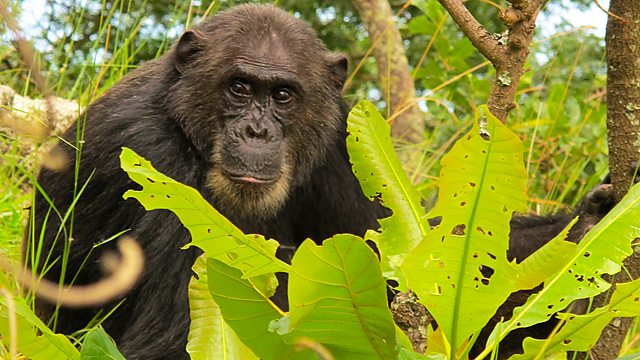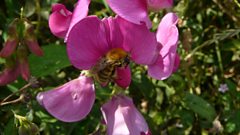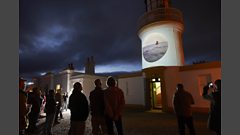Episode 3
Brett Westwood asks what role brownfield sites across the UK can play in building wildlife into our built environment and bringing nature closer to 80 per cent of the population.
Saving Species presented by Brett Westwood this week poses the question; with increasing pressures to develop our land for housing, transport and industry, is there still room for Britain's wildlife to flourish?
Recently the Government set out proposals to extend development rights into the Green Belt as an aid to economic growth. While some sectors of the economy welcome this move, others such as conservation groups predict a backlash of public opinion similar to that of the recent Government plans to sell off public woodland. Could other sites such as brown-field, be developed in preference?
To investigate this Brett Westwood discovers the importance of brown-field sites on a visit to Canvey Wick in the Thames Estuary accompanied by Sarah Henshall, Brownfield Manager from the charity, Buglife. Here in the 40 years since the industry moved out, the biodiversity contained within this SSSI is staggering, including iconic species like the shrill carder bee. But can lessons learned here be used in brown-field sites across the United Kingdom? And is the negative connotations of the word brown-field even one of the problems in degrading these areas as wildlife hot-spots, in preference for development.
And we hear from Dr Chris Baines who discusses whether the plans to build a London to Birmingham high speed rail link could actually benefit wildlife in the longer term.
Also in the programme - News from around the world with our regular news reporter, Kelvin Boot. And we'll update you on the activities of the Open University's iSpot.
Producer : Mary Colwell
Presenter : Brett Westwood
Editor : Julian Hector.
Last on
More episodes
Previous
Next
Clip
-
![]()
Canvey Wick Nature Reserve
Duration: 03:05
Sublime Residency, Cromarty

IOTA in collaboration with the University of Aberdeen's School of Biological Sciences hosted two artists in residence at the Lighthouse Field Station in Cromarty.
Ìý
Funded by Creative Scotland and HIE,ÌýtheÌýSublime residencies involved artists and Ìýworking alongside marine biologists to create new works,Ìýwhich were presented during a week of activity in Cromarty in early September.
Ìý
In a response to the maritime environment of Cromarty, Stephen Hurrel's film, Dead Reckoning, featured cinematic images of the immediate environment, together with underwater video and sound recordings, to create a dialogue between 'above' and 'below' the waterline.
ÌýÌý
Ìý
As part of his residency Mark Lyken's sound installation,The Terrestrial Sea, explored how environment effects human and marine mammal behaviour and the parallels between the urban and coastal experience.
Canvey Wick Nature Reserve
Canvey Wick Nature Reserve is a former industrial site located at the west end of Canvey Island. In 2005 itÌýwas designated a Site of Special Scientific Interest, the first brownfield site to be protected specifically for its invertebrates.
Ìý
Buglife,Ìýthe Invertebrate Conservation Trust, is working to raise the profile of brownfield habitats in the UK. .
Brownfield Land

Brownfield sites are best described as derelict and disused industrial or commercial land. Areas of abandoned factories and old railway lines are becoming a refuge for a growing number of species. Once all the human activity has died down, wildlife starts to move back into these undisturbed areas. Brownfield sites can contain a mosaic of different habitats and niches, providing opportunities for a wide variety of animals and insects, from toads and snakes to dragonflies and rare bees. Plants can also thrive on the poor soils, from purple rosebay willowherb to yellow groundsels and dandelions.
Ìý
Ìý
is available for use for anyone puzzling over their local brownfield species. View observations on iSpot relating to .
±«Óãtv Nature report
In June 2012 ±«Óãtv Nature reported on the growing importance of wasteland or "brownfield" areasÌýfor UK wildlife.
Ìý
Broadcasts
- Tue 18 Sep 2012 11:00±«Óãtv Radio 4
- Thu 20 Sep 2012 21:00±«Óãtv Radio 4
The Open University
Get closer to the species with The Open University




